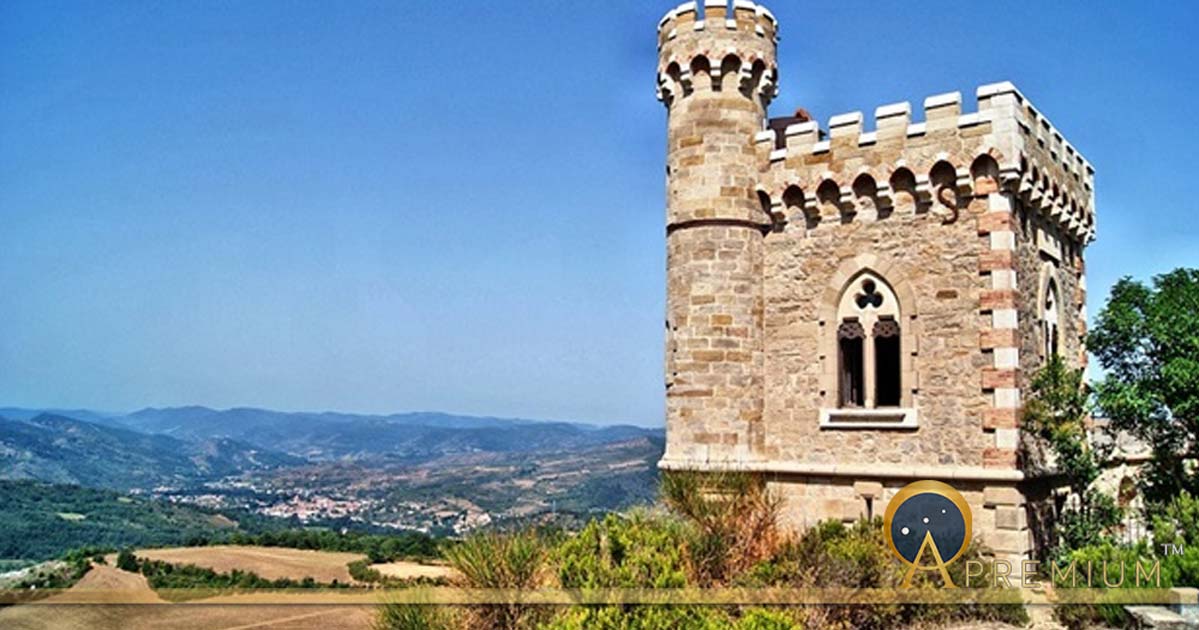Gaul’s Solar Alignment: A Secret Deeper than Rennes-Le-Chateau
In 54 BC, the Celtic Mandubii tribe ruled by Vercingetorix capitulated to Julius Caesar and so ended Gaul’s resistance to Rome. However, was the Battle of Alesia, located in southern France actually fought at Alaise, in eastern France? Like the famous Rennes-le-Chateau, both sites share a secret of great ancient astronomical significance. Historian Ashley Cowie used the busts of two famous French historians to unravel an ancient archaeoastronomy secret: Medieval churches built along a solstice alignment covering Iron Age sites.
Rennes-le-Chateau, Famous French Mystery Village
Rennes-le-Château is a small hilltop village in Languedoc in southern France that shot to international fame when the 1982 worldwide bestseller The Holy Blood and the Holy Grail sensationalized the story of a 19th-century priest, Father Bérenger Saunière, who is said to have unearthed a great treasure there. Although the story has always had its skeptics, when Dan Brown retold it in his 2003 book The Da Vinci Code, Rennes-le-Château saw over 100,000 mystery seeking tourists in the first year.
This tale of mystery and intrigue reflects many of the clues and components that have made Rennes-le-Château famous. It revolves around a French hilltop village church that is located amidst mysterious landscape alignments. What is more, an inner circle of famous French historical figures all shared a secret about the village, a secret of great and ancient astronomical significance.
Alise-Sainte-Reine: Battle of Alesia?
There is a religious commune located on the heights of Alise-Sainte-Reine in the Côte-d’Or department of the Bourgogne-Franche-Comté region, about 17 kilometers (10.56 miles) south-east of Montbard and 50 kilometers (31 miles) north-west of Dijon, eastern France. The inhabitants of the commune are known as Alisiens and Alisiennes and they inhabit and ancient landscape traditionally associated with the site of the famous 54 BC Battle of Alesia. The 'Gallic oppidum of Alesia’ was a vast fortified Celtic settlement which dominated a lofty hill, flanked with a river on each side and it served as the center of the Mandubii tribe. According to Encyclopedia Britannica it was here at Alise-Sainte-Reine that 80,000 Celtic warriors led by Vercingetorix surrendered to an army of around 45,000 Roman soldiers spearheaded by Julius Caesar and marked the end of Gallic independence in France and Belgium.

Vercingetorix throws down his arms at the feet of Julius Caesar, by Lionel Royer (1899). Painting depicts the surrender of the Gallic chieftain after the Battle of Alesia in 54 BC. (Public Domain).
Like this Preview and want to read on? You can! JOIN US THERE ( with easy, instant access ) and see what you’re missing!! All Premium articles are available in full, with immediate access.
For the price of a cup of coffee, you get this and all the other great benefits at Ancient Origins Premium. And - each time you support AO Premium, you support independent thought and writing.
Ashley Cowie is a Scottish historian, author and documentary filmmaker presenting original perspectives on historical problems, in accessible and exciting ways. His books, articles and television shows explore lost cultures and kingdoms, ancient crafts and artifacts, symbols and architecture, myths and legends telling thought-provoking stories which together offer insights into our shared social history. www.ashleycowie.com.
Top Image: View from Rennes-le-Chateau (CC0)
By Ashley Cowie


















Comments
I just published a YouTube video identifying a precise treasure location for the Rennes-le-Château Mystery, and yes it all has to do with the tilt of the earth that drives the solstices, which are connected to the Christograms IX, IH and IHS configurations. All is explained in this short video https://www.youtube.com/watch?v=rBGPjWhQHCI And as you will see, my findings go deeper in a whole series of videos that a Scottish historian would be interested in viewing...